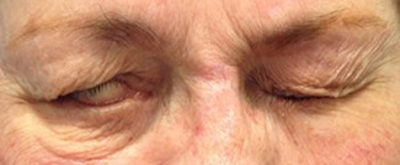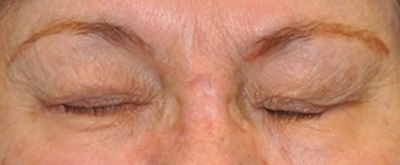Facial Paralysis
Facial paralysis results from the dysfunction of the facial nerve. Facial muscles may appear to droop or become weak, similar to a stroke. This can happen on one or both sides of the face. Causes of facial paralysis may include:
- Inflamed or infected facial nerve
- Head or neck tumor
- Head trauma
- Stroke
- Lyme disease
- Bell's Palsy
- Autoimmune diseases
- Congenital (present at birth)
When someone experiences the onset of facial paralysis, it is critically important that this person is evaluated for a determination of the underlying condition that has caused this to occur. Sudden onset may be a stroke, but there are many other symptoms aside from facial paralysis that are present with a stroke. All of the conditions above could be the root cause of facial paralysis. However, in people who are otherwise healthy, Bell's Palsy (Idiopathic Facial Paralysis) can be the cause of facial paralysis. It can be related to Lyme disease or herpes simplex virus. Most cases result in one-sided facial paralysis. Upon presentation of symptoms, immediate evaluation by an internist, neurologist or emergency room physician should be conducted. Steroids and anti-viral medications should be started to help reduce the inflammation of the facial nerve is Bell’s Palsy is suspected. Bell’s Palsy patients should be monitored and followed up as an outpatient to record return of function. If eyelid closure is affected, taping the eyelids and rewetting drops are necessary to prevent loss of vision from corneal injury. If the nerve is cut as a result of trauma, the end of the nerve can be sewn back together using an operating microscope. This must be performed within 72hrs from the injury to improve the chances of finding the cut ends.
Dr. Bastidas will do an assessment of the degree of facial paralysis. The facial nerve has five branches which will be evaluated by Dr. Bastidas: forehead, upper eyelid, lower eyelid, lip and cheek animation. Based upon the results of facial nerve evaluation, Dr. Bastidas will review your treatment options for those areas impacted by facial paralysis. If necessary, nerve grafting can be done with excellent results.
It is important to see a physician trained in the treatment of facial paralysis as quickly as possible. Dr. Nicholas Bastidas is an adult and pediatric plastic and reconstructive surgeon widely known for his diagnostic and treatment skills and his facial paralysis patients take great satisfaction in their results. If the function has not been restored by 1 1.5yrs permanent muscle atrophy may occur. Muscle transfers are thereby necessary to restore movement, the two options typically being from the head (temporalis muscle slide) or from the thigh (free gracilis muscle transfer).
Moebius Syndrome, is a congenital form of facial paralysis that may also involve the movements of the eyes. This congenital form of facial paralysis can affect both sides of the face and is quite disfiguring. Moebius syndrome patient do not have a working facial nerve and therefore muscle transfers must be performed to restore animation using either the temporalis or gracilis muscle (innervated by the masseteric nerve).
Dr. Bastidas understands the importance of seeing his facial paralysis patients as soon as possible and his staff will work with you to see him quickly and begin the process of restoring facial animation. This is particularly important as facial paralysis has a strong impact on a person's ability to communicate and relate to others and recovery will help to bring normalcy back to a patient's life. The goals are both functional and aesthetic including: brow lifting for facial symmetry, eyelid tightening to prevent drying out, restoration of the ability to smile and to prevent drooling.
If you or a loved one is experiencing facial paralysis, there is every reason to be hopeful that your facial animation can be restored. Dr. Bastidas is a founding member of the Institute for Pediatric Plastic Surgery with its eight centers of excellence, including the Center for Facial Paralysis and Asymmetry. Encouraging collaboration within a team of physicians in related specialties, the Center provides state-of-the-art care and participates in research in this constantly evolving field of reconstructive surgery, both pediatric and adult, for treatment of facial paralysis. Visit the website at www.DrBastidas.com and www.ippcs.org to learn more about the excellent treatments performed by Dr. Nicholas Bastidas for facial paralysis.

